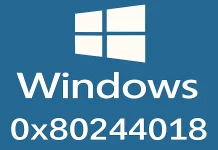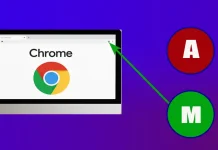It’s not a secret that modern TVs support a maximum 120 Hz frame rate and in some cases, 120 Hz is always better than 60 Hz. However, 60 Hz TVs are still widespread on the market. So, you may be interested in the refresh rate that your Samsung TV supports.
From my personal experience, I can say that 120 Hz TVs are, of course, better. But I’m not sure it’s worth overpaying.
Samsung TVs max supported frame rate explained
TV’s max supported frame rate depends on two factors:
- The display (matrix) type – depending on the type of display, the max supported frame rate may be 60 Hz or 120 Hz.
- Graphics processor – TVs come up with different graphics processors and they’re processing the video stream, the frame rate, therefore, depends on the particular type of the processor.
So if your TV has a processor which can only support 60 fps, there is no point, for the company, to use the display that supports 120 fps. As a rule, if the TV has a 60 Hz display, then the graphics processor supports also 60 Hz only.
Motion Rate vs Refresh Rate
In the specifications of Samsung TV sets you can see two designations: Motion Rate and Refresh Rate. They’re completely different and you should know the difference. Also, I’ve noted that recently, that Samsung stopped providing specific figures on these parameters, perhaps to avoid confusing potential buyers.
However, these are some of the main parameters that can immediately be seen in Samsung TV parameters inside the system.
Motion Rate – This parameter does not reflect the actual frequency. It only tells you that the TV has various programs to improve picture quality. Visually, motion scenes look as if you are watching a video at 240 frames per second. This is a synthetic figure that has nothing to do with the actual frames per second rate.
Refresh Rate is the actual frame rate, the maximum number of frames per second at which the TV can display video.
How to find out the max frame rate of your Samsung TV
If your TV has a Motion Rate parameter in the specs, divide it by 2, and this will be the maximum frequency your TV can show. For example, dividing the Motion Rate 240 by two, 120 frames per second is the maximum frame rate.
How do you determine the frame rate if the specifications don’t include the parameters Motion Rate and Refresh Rate? It’s a little more complicated. Samsung in 2021, in North America at all doesn’t report these parameters.
Tip: Look at what standard HDMI ports support, if your TV only has HDMI 2.0, your TV is 60 Hz. Well, if you have at least one HDMI 2.1 port, your TV supports a maximum frame rate of 120 Hz.
This pattern happens for a very simple reason. Today’s TVs support 4K resolution. HDMI 2.0 only supports 4K 60Hz. HDMI 2.1 4K 120Hz.





